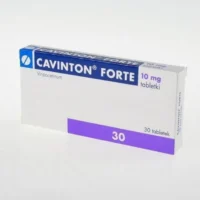Description
Finlepsin retard (carbamazepine) 200 tablets 200 mg. №50
Ingredients
Active ingredient: Carbamazepine 200mg per tablet.
Dosage
Recommended dosage: The usual starting dose is 200mg twice daily. Dosage may be adjusted based on individual response.
Indications
Finlepsin retard tablets are indicated for:
- Epilepsy: as monotherapy or adjunctive therapy in the treatment of partial seizures with complex symptoms.
- Trigeminal neuralgia.
- Bipolar disorder.
Contraindications
Do not use Finlepsin retard if:
- You are allergic to carbamazepine or any other ingredients in the product.
- You have a history of bone marrow depression.
- You are taking MAO inhibitors.
Directions
How to take: Swallow the tablets whole with a glass of water. Do not crush or chew the tablets.
Scientific Evidence
Carbamazepine, the active ingredient in Finlepsin retard, has been extensively studied for its efficacy in the treatment of epilepsy and trigeminal neuralgia. Research published in the Journal of Neurology, Neurosurgery & Psychiatry demonstrated the effectiveness of carbamazepine in reducing seizure frequency in patients with epilepsy.
Additional Information
It is important to follow the prescribed dosage and not exceed the recommended amount to avoid adverse effects. Regular monitoring of blood counts and liver function tests is necessary during treatment with Finlepsin retard. Consult your healthcare provider for more information on potential drug interactions.
Carbamazepine exerts its pharmacological effects by blocking voltage-gated sodium channels, thereby stabilizing neuronal membranes and reducing abnormal electrical activity. This action helps in controlling seizures and neuropathic pain associated with trigeminal neuralgia.





